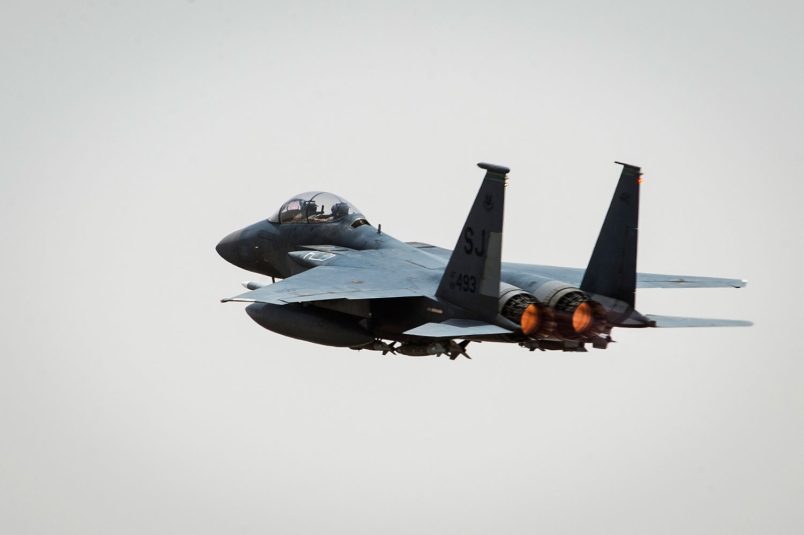-
Tips for becoming a good boxer - November 6, 2020
-
7 expert tips for making your hens night a memorable one - November 6, 2020
-
5 reasons to host your Christmas party on a cruise boat - November 6, 2020
-
What to do when you’re charged with a crime - November 6, 2020
-
Should you get one or multiple dogs? Here’s all you need to know - November 3, 2020
-
A Guide: How to Build Your Very Own Magic Mirror - February 14, 2019
-
Our Top Inspirational Baseball Stars - November 24, 2018
-
Five Tech Tools That Will Help You Turn Your Blog into a Business - November 24, 2018
-
How to Indulge on Vacation without Expanding Your Waist - November 9, 2018
-
5 Strategies for Businesses to Appeal to Today’s Increasingly Mobile-Crazed Customers - November 9, 2018
During lull in Kurdish-Syrian clashes, scores flee city
The Pentagon says the US scrambled fighter aircraft Thursday to protect American special operations forces and allies near the northeastern Syrian city of Hassakeh, which was being bombed by Syrian government warplanes.
Advertisement
Pentagon spokesman Captain Jeff Davis warned that “the Syrian regime would be well-advised not to do things that place them (coalition forces) at risk”.
“We immediately contacted the Russians via the MOU channel, established for de-confliction and to ensure the safety of Coalition forces and their counter-ISIL [Daesh] efforts”, Rankine-Galloway said.
The coalition is now conducting additional combat air patrols in the region, he added.
Whether they can actually do that is another matter, however, as it would be expected that if the USA started seriously attacking Syrian warplanes and bombing ground targets, future Syrian flights in the area could bring a Russian escort, betting that the United States won’t risk starting a direct shooting war with the Russians.
On Thursday, Syrian government aircraft bombed Kurdish positions in the divided northeastern city of Hasakah, the first such strikes against a Kurdish-held area of Syria.
The main Kurdish force in Syria, known as the People’s Protection Units, or YPG, has been the main USA -backed force in Syria and the most effective force in fighting Daesh, also known as ISIS and ISIL.
Also Friday, the Russian military said two of its ships launched cruise missiles at militant targets in Syria from the eastern Mediterranean Sea.
But it illustrated the increasingly tense and ambiguous Syrian battlefield, where aircraft and ground troops from multiple countries – with multiple agendas and loyalties – are fighting overlapping wars.
President Barack Obama has barred combat for USA ground forces in Iraq and Syria but the ban stops at self-defense.
The operations were part of Operation Inherent Resolve, the USA military’s central effort against the Islamic State militant group in both Syria and Iraq – a campaign that’s supported by Bashar Assad’s regime and their top ally, Russia.
Individuals close to the Kurdish forces agreed that the clashes had escalated but said they began when the NDF began arresting Kurds.
In addition to airstrikes, Syrian government forces used heavy artillery in the city, killing at least 14 people and wounding dozens more, local news reports said.
“Coalition aircraft came to the area in response, as a measure to protect Coalition forces operating in the area”.
“We are fighting mercenaries”, he said, referring to pro-government gunmen fighting alongside Assad’s forces.
Most of those evacuated were women and children.
The YPG and Syrian government forces have mostly left each other to their own devices in the conflict, during which Kurdish groups have exploited the collapse of state control to establish autonomy across much of the country’s north. Five pro-government gunmen of the National Defense Force were killed as well, the Observatory said.
Advertisement
Assad, backed by Russian Federation and Iran, has focused mostly on fighting Sunni Arab rebels who have been battling to oust him in western Syria with support from countries including Turkey, Saudi Arabia and the United States. The government has a base outside Hasakah and operates an air facility at Qamishli; the YPG generally does not interfere with road travel between the two cities.





























